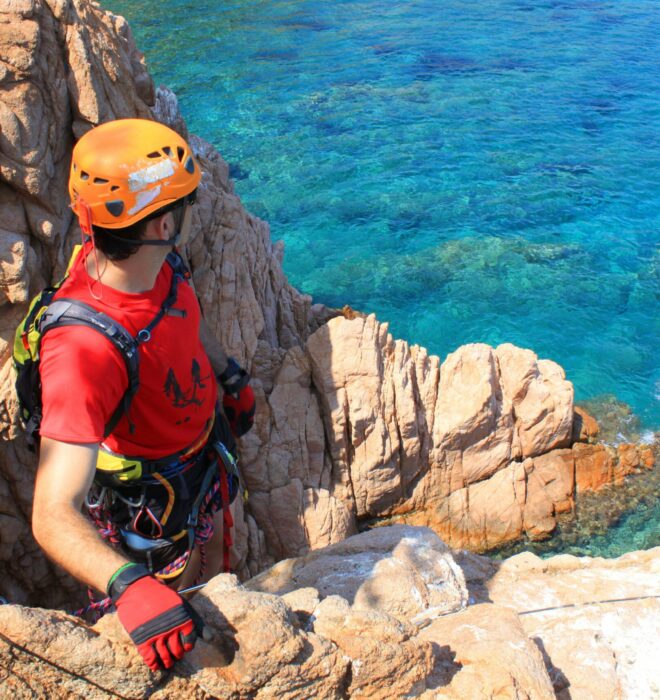1. Prepare for the outing
- Choose a via ferrata route suited to the participants’ level; start with easier routes (this helps familiarize yourself with the location and access points).
- Check the weather forecast. Beware of storms. Do not start the activity right after rain, as the terrain can be slippery.
- When planning the outing, choose a dynamic rope long enough to ensure an escape route or help a companion.
- Learn and practice how to perform belay, rappel, and hauling techniques.
- Avoid the hottest hours of the day, as there is a risk of sunstroke, sunburn, and heat exhaustion.
- Wear semi-rigid mountain boots with a heel; they allow for a more comfortable stance when standing on the rungs.
- Protect your hands by using gloves with cut-off fingers. They offer excellent grip on rungs and cables while maintaining the dexterity needed to operate carabiners throughout the climb.
2. Always use a lanyard with an energy absorber and wear a helmet
- The lanyard with an energy absorber is the proper safety device for use on via ferratas, preventing potential fall factors. Its use is essential.
- Always make sure you’re secured with the short arm of the lanyard.
- Stay focused to avoid progressing without having both carabiners clipped to the safety cable when passing intermediate anchors.
3. Falls must be avoided on via ferratas
- A fall poses a high risk of hitting a rung, the cable, or the rock. Energy absorbers function optimally for users weighing between 45 and 100 kg.
- Users outside this weight range should self-belay using a rope from above to avoid significant falls.
4. Know how to rest
- Don’t hesitate to secure yourself with the short arm of the energy absorber (e.g., SCORPIO), directly to the cable or a rung, when tired. Relax your arms by shaking them downward.
5. Always wear a helmet
- Always wear your helmet—not only to protect yourself from falling rocks, but also from falling objects accidentally dropped from pockets or dislodged from backpacks and gear loops on your harness (such as phones, digital cameras, water bottles, coins…).
- These items may weigh just a few grams in your pocket, but with momentum, they can become powerful projectiles when falling to people below.




